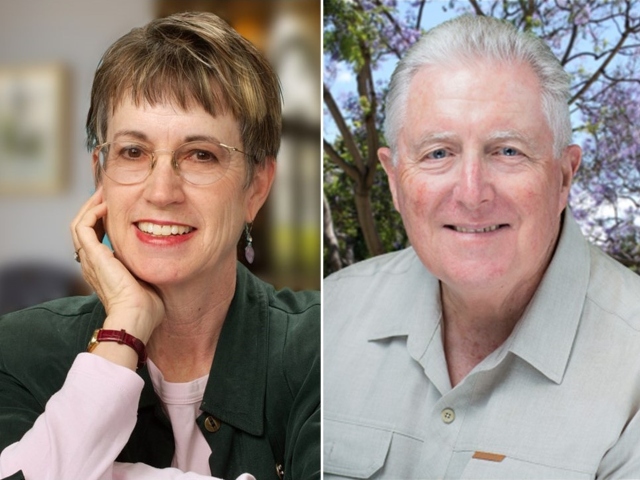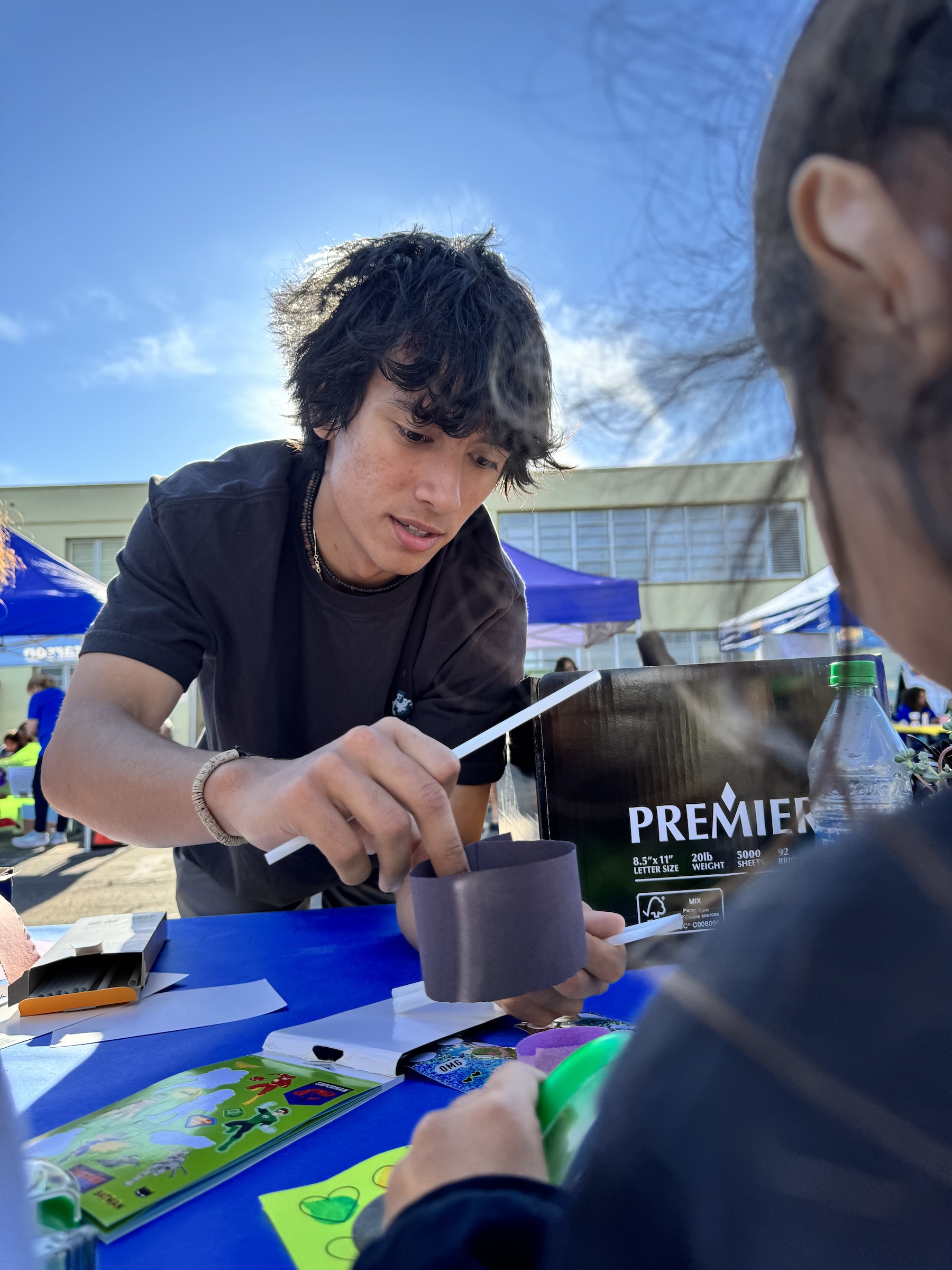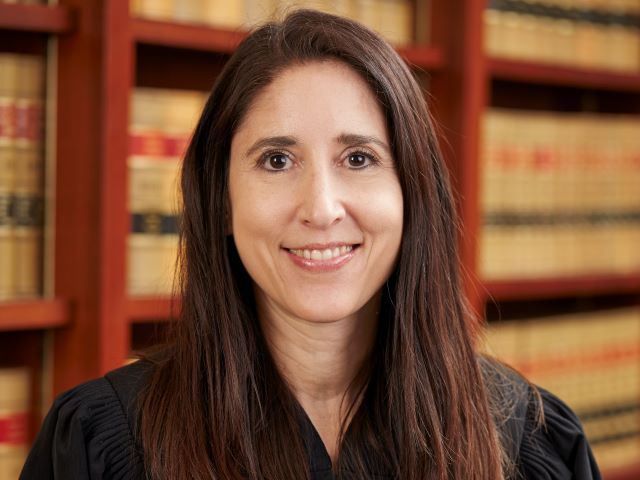Peace Innovators: Six USD Thought Leaders Present Their Passions for Peacebuilding

The possibility of peace. It's what we seek in ourselves, for others and in the world. It's a wonderful dream everyone eagerly envisions, like we do the ending of a good book or a suspenseful movie. Trouble is, the peace process is more often complex, messy, stubborn, time-consuming, delayed and not as easy as simply saying, "stop what you're doing and be peaceful." Even in countries where a peace accord is reached, the change taking place can be challenging, laboring and still met with resistance. It takes time for something new to sink in. Change is hard. Jubilation is not guaranteed.
That’s why peacebuilding — the true, ongoing, passionate work of those who desire peace — is so varied. The way to peace is not a one-way street; to work toward peace means searching multiple pathways. It's a change in thought, in action and its delivery requires patience, consistency, strength and a relentless passion to see it through the road blocks known and unknown.
On Thursday, March 14, 6 p.m., in the Kroc School’s Institute for Peace and Justice Theatre, six University of San Diego thought leaders will present at the Peace Innovators event, and Kroc School Dean Patricia Márquez will further enhance the experience at the master of ceremonies. The event is free and open to the public —RSVP now.
Creating a better world requires new ways to tackle old challenges. The six — School of Business Associate Professor Dr. Priya Kannan-Narasimhan, Kroc School Professor of Practice Dr. Michael Fryer, Kroc IPJ Executive Director and Kroc School Professor of Practice Dr. Andrew Blum, Assistant Professor of Integrated Engineering’s Dr. Gordon Hoople and the co-presenting team of Assistant Sociology Professor Dr. Greg Prieto and USD Mulvaney Center’s Maria Silva, MA — will share stories on the impact they've seen, insight they've gleaned and ideas they have to bring us closer to solving problems. Their unique perspectives can help further our understanding of peace today and in the future.
Here's a closer look at the speakers, their topics, how they were drawn to their work and how it inspires their own drive for peace.
Greg Prieto and Maria Silva: "UnDocuAllies: Inclusion in an Age of Exclusion."
In an era of profound political uncertainty for undocumented youth, institutions of higher education have a powerful role to play in providing support and inclusion.

Prieto’s background: The sociology of immigration is the focus of my PhD in sociology and my ongoing research. I have a book on the subject and I've worked, since 2013 when I arrived at USD on issues related to immigration, culminating in my work on the President's Immigration Task Force. I co-founded, with my co-presenter, Maria Silva, the DACAlliance, an informal support group for our undocumented students.
Prieto on how his interest in peace is shaped through his topic: The possibility for peace emerges when we begin to see immigrant youth as our youth, not as a foreign imposition and not a group of politically inert innocents, but a group of young people who are tied to this country through their families, work, communities and education. These ties evidence their connection to this country and should be taken to mean that they are as much a part of us as we are a part of them. When we view them this way, not as charity cases or objects of American beneficence, they become contributors who deserve the opportunity to throw off their legal constraints and realize their own tremendous potential.
Silva’s background: I was born and raised in a U.S.-Mexico border town and live in one to this day. This gave me firsthand experience about our broken immigration system and continues to ground me in my work with undocumented communities, both on and off campus. As a professional, I've been a part of, supported, provided services to and engaged with immigrant communities in the U.S. for the past 10 years.
Silva on how her interest in peace is shaped through her topic: Undocumented communities are not necessarily the ‘other’ but an integral part of our communities. We have deep-rooted similarities that go far above and beyond our differences. Once we come to this realization we cannot help but to see the possibilities for peace.
Michael Fryer: "Building Peace You May Never See."
We architect our buildings to last for generations, we should do the same with our visions for peace.

Fryer's background: I was very lucky to start my work on issues of peace and conflict in Northern Ireland at the Corrymeela Community, the oldest center for peace and reconciliation on the island of Ireland. I learned from amazing practitioners how to create the kinds of spaces in which connection, dialogue and, perhaps, healing might take place. I learned that the small things matter in peace work and too often we fail to recognize the value and importance of people, contributions and stories behind the scenes. Our view of what building peace is tends to be too small. We need a bigger and broader version.
Fryer on how his interest in peace is shaped through his topic: Too much peace work focuses on the perceived value or short-term impact, large numbers of people being involved and headline-grabbing stories. My role at the Kroc School as a professor of practice is that I try to encourage students to look at peace differently. In an age dominated by social media, there's huge pressure to try and develop your own unique brand and to be seen as influential. My experiences in Northern Ireland and elsewhere challenges that. Poet W.B. Yeats wrote, ‘Peace comes dropping slow.’ There are no quick fixes. At an individual or societal level, the process of repairing broken relationships takes time. The possibilities for peace are all around us. We are at our best when we learn to recognize them while also acknowledging their complexity.
Priya Kannan-Narasimhan: "Innovate with Compassion."
What can we do to include the lens of compassion when we think of innovations in business?

Kannan-Narasimhan’s background: My key question is, if compassion is the base for creating and scaling multi-billion-dollar businesses, then why is the discussion of compassion left out of boardrooms and classrooms? As a professor studying strategy and business models and as an individual raised in this paradigm two decades ago that the purpose is to make money, I find this dichotomy fascinating. Traditionally, businesses did not talk about compassion. Emotions at work was a taboo topic and still is in many organizations. However, more and more businesses are trying to engage in sustainability and ethics, trying to find new ways to innovate. Compassion is a base for creating sustainable businesses. It is also central to our identity as human beings. When we force compassion out of business, we are leaving a piece of ourselves behind when we come to the workplace. Despite this, we rarely spend time talking about compassion for any significant amount of time in boardrooms or classrooms. What can we do in our capacity to change the conversation to make compassion as integral to innovation and business?
Kannan-Narasimhan on how her interest in peace is shaped through her topic: Looking at businesses through this lens has expanded my understanding of what the key activities of businesses are. Although many companies want to be sustainable and know the stakeholders they affect, many are not aware how to get there. Looking at all key activities of business through the lens of compassion creates a natural flow for businesses to create profits, peace and prosperity for all stakeholders.
Andrew Blum: "The Facts of Change."
In an allegedly post-truth world, what role do facts have in creating change?

Blum’s background: I've spent much of my career figuring out how knowledge and evidence can be used to shift what organizations do. Over the years I have learned that gathering evidence is always the easy part. The real challenge is understanding how complex organizations use or don't use evidence, what kind of evidence they use, how evidence competes with other factors when organizations make decisions and so on. Especially now, when some are talking about us being in a "post-truth" world, I thought it was crucial to really reflect and present on what I've learned about the role of knowledge in creating positive change.
Blum on how his interest in peace is shaped through his topic: Especially in regard to conflict, where everything is contested, it's useful to begin with the facts. To train yourself to be very clear-eyed about the situation you're working in. Peacebuilders as a whole have largely left behind their "buy the world a Coke" warm and fuzzy approach to work on conflict and are often coldly realistic about the problems they're confronting. This is a good thing, especially because when one looks at situations of conflict realistically, there are real opportunities to resolve conflicts without violence and to build more peaceful societies.
Gordon Hoople: "Social + Technical = Peace."
To promote peace, we must take a holistic approach which recognizes that social and technical are inextricably linked.

Hoople’s background: My talk is about viewing the world with a particular mindset — what I call a sociotechnical mindset — and the importance of this approach for promoting peace. The talk follows my journey from high school, where I thought you had to pick between social or technical, to my current thinking where I view these as a continuum. I define Sociotechnical thinking as the ability to identify and solve problems with an understanding of the connection between the social and technical. I argue that approaching problems from a sociotechnical perspective is pivotal to solving the world's most challenging problems.
Hoople on how his interest in peace is shaped through his topic: My work in this space has fundamentally broadened the way I think about peace. Johan Galtung, the father of peace studies, divided the field into two categories: the first is negative peace, the absence of violence or war. This is what many of us think about when we hear the word peace. The second is positive peace. This, he explained, as the "integration of human society." These are the ideas espoused by Dr. Martin Luther King Jr. in his "I Have a Dream" speech. Positive peace is about creating a fair and just society. I realized that to truly achieve a state of positive peace, all of us must contribute to peacebuilding.
—Ryan T. Blystone
Contact:
Kevin Dobyns
kdobyns@sandiego.edu
(619) 260-7618



